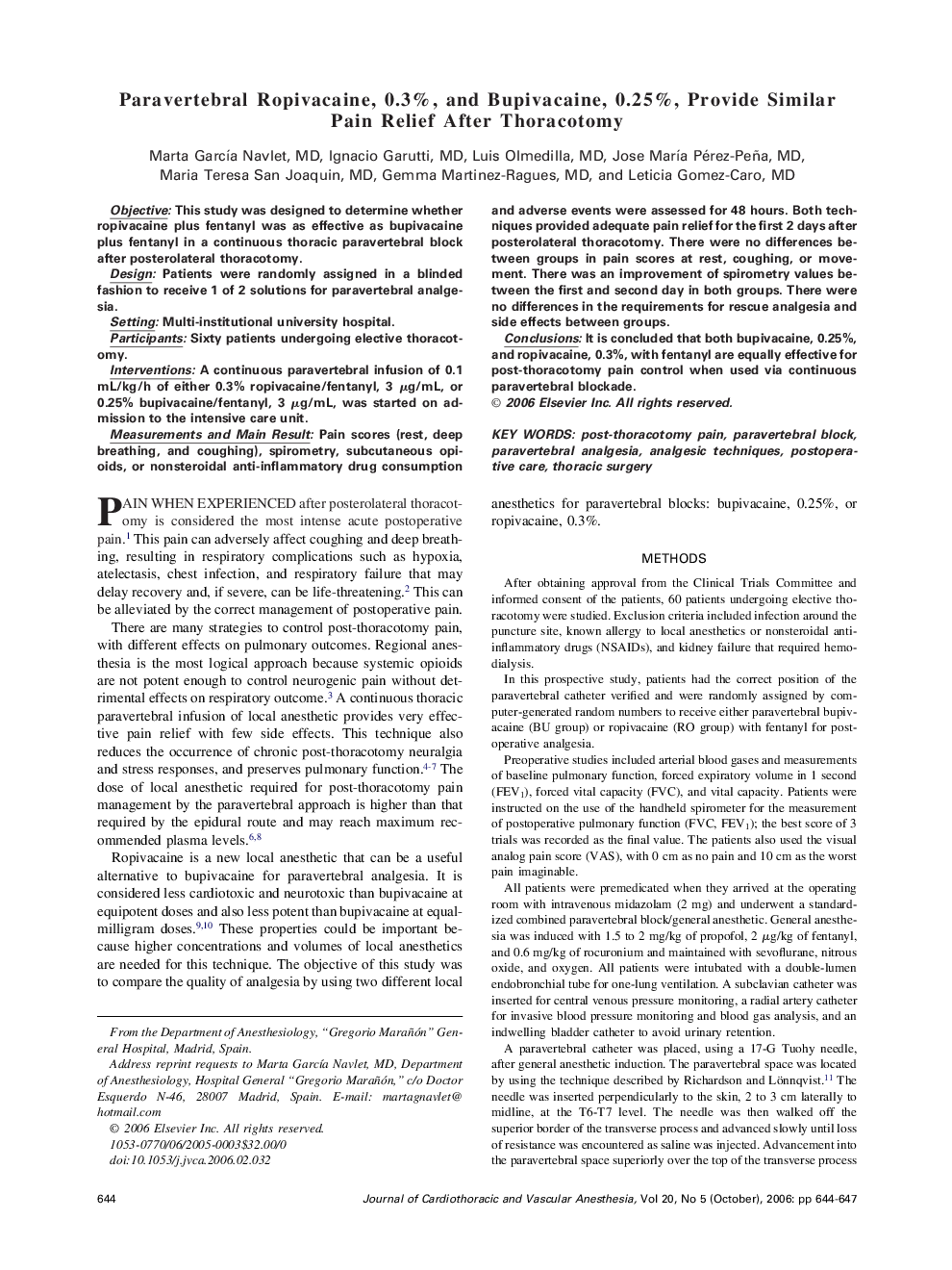| Article ID | Journal | Published Year | Pages | File Type |
|---|---|---|---|---|
| 2761559 | Journal of Cardiothoracic and Vascular Anesthesia | 2006 | 4 Pages |
Objective: This study was designed to determine whether ropivacaine plus fentanyl was as effective as bupivacaine plus fentanyl in a continuous thoracic paravertebral block after posterolateral thoracotomy.Design: Patients were randomly assigned in a blinded fashion to receive 1 of 2 solutions for paravertebral analgesia.Setting: Multi-institutional university hospital.Participants: Sixty patients undergoing elective thoracotomy.Interventions: A continuous paravertebral infusion of 0.1 mL/kg/h of either 0.3% ropivacaine/fentanyl, 3 μg/mL, or 0.25% bupivacaine/fentanyl, 3 μg/mL, was started on admission to the intensive care unit.Measurements and Main Results: Pain scores (rest, deep breathing, and coughing), spirometry, subcutaneous opioids, or nonsteroidal anti-inflammatory drug consumption and adverse events were assessed for 48 hours. Both techniques provided adequate pain relief for the first 2 days after posterolateral thoracotomy. There were no differences between groups in pain scores at rest, coughing, or movement. There was an improvement of spirometry values between the first and second day in both groups. There were no differences in the requirements for rescue analgesia and side effects between groups.Conclusions: It is concluded that both bupivacaine, 0.25%, and ropivacaine, 0.3%, with fentanyl are equally effective for post-thoracotomy pain control when used via continuous paravertebral blockade.
